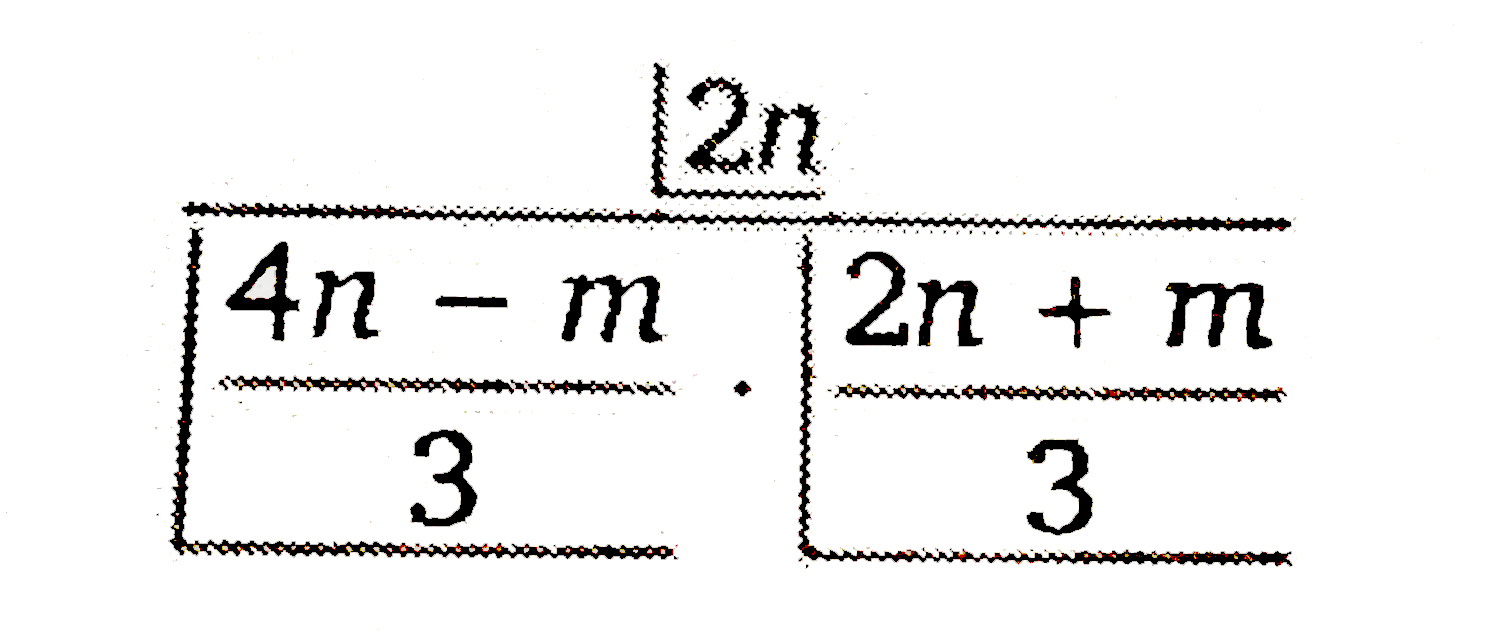If loge11+x+x2+x3 be expemnded in asecending power of x , show that the coefficient of xn
is −1n if n is odd or of the form 4m + 2 and 3nif n is of the form 4m
To solve the problem, we need to expand the expression loge(11+x+x2+x3) in ascending powers of x and find the coefficients of xn for different values of n.
Step 1: Rewrite the Expression
We start by rewriting the logarithmic expression:
loge(11+x+x2+x3)=−loge(1+x+x2+x3)
Step 2: Factor the Denominator
Next, we can factor the denominator:
1+x+x2+x3=(1+x)(1+x2)
Thus, we have:
−loge(1+x+x2+x3)=−loge((1+x)(1+x2))=−loge(1+x)−loge(1+x2)
Step 3: Use Series Expansion
Now we will use the series expansion for loge(1+x) and loge(1+x2):
loge(1+x)=x−x22+x33−x44+…
loge(1+x2)=x2−x42+x63−x84+…
Step 4: Combine the Series
Now we combine the series for −loge(1+x) and −loge(1+x2):
−loge(1+x)=−(x−x22+x33−x44+…)
−loge(1+x2)=−(x2−x42+x63−x84+…)
Step 5: Identify Coefficients
Now we need to find the coefficients of xn:
1. For odd n: The only contributions come from −loge(1+x). The coefficient of xn is −1n.
2. For n=4m+2: The contributions come from both series. The coefficient from −loge(1+x) is −14m+2 and from −loge(1+x2) is −12m+1. Adding these gives −1n.
3. For n=4m: The contributions are −14m from −loge(1+x) and +12m from −loge(1+x2). Adding these gives 3n.
Conclusion
Thus, we have shown:
- The coefficient of xn is −1n if n is odd or of the form 4m+2.
- The coefficient of xn is 3n if n is of the form 4m.
We start by rewriting the logarithmic expression:
loge(11+x+x2+x3)=−loge(1+x+x2+x3)
Next, we can factor the denominator:
1+x+x2+x3=(1+x)(1+x2)
Thus, we have:
−loge(1+x+x2+x3)=−loge((1+x)(1+x2))=−loge(1+x)−loge(1+x2)
Now we will use the series expansion for loge(1+x) and loge(1+x2):
loge(1+x)=x−x22+x33−x44+…
loge(1+x2)=x2−x42+x63−x84+…
Now we combine the series for −loge(1+x) and −loge(1+x2):
−loge(1+x)=−(x−x22+x33−x44+…)
−loge(1+x2)=−(x2−x42+x63−x84+…)
Now we need to find the coefficients of xn:
1. For odd n: The only contributions come from −loge(1+x). The coefficient of xn is −1n.
2. For n=4m+2: The contributions come from both series. The coefficient from −loge(1+x) is −14m+2 and from −loge(1+x2) is −12m+1. Adding these gives −1n.
3. For n=4m: The contributions are −14m from −loge(1+x) and +12m from −loge(1+x2). Adding these gives 3n.
Thus, we have shown:
- The coefficient of xn is −1n if n is odd or of the form 4m+2.
- The coefficient of xn is 3n if n is of the form 4m.
Topper's Solved these Questions
- BOOK - AAKASH INSTITUTE ENGLISHCHAPTER - SEQUENCES AND SERIES EXERCISE - Try Yourself87videos
SEQUENCES AND SERIES
- BOOK - AAKASH INSTITUTE ENGLISHCHAPTER - SEQUENCES AND SERIES EXERCISE - Assignment (SECTION - A) One option is correct60videos
SEQUENCES AND SERIES
- BOOK - AAKASH INSTITUTE ENGLISHCHAPTER - RELATIONS AND FUNCTIONS EXERCISE - Assignment (Section - J) Aakash Challengers Questions8videos
RELATIONS AND FUNCTIONS
- BOOK - AAKASH INSTITUTE ENGLISHCHAPTER - SETS EXERCISE - SECTION-I(Aakash Challengers Questions)4videos
SETS
Similar Questions
Coefficient of xn in loge(1+x2) is
View SolutionProve that the coefficients of xn in (1+x)2n is twice the coefficient of xn in (1+x)2n−1.
View SolutionCoefficient of x15 in (1+x+x3+x4)n is
View SolutionThe coefficient of xn in the exansion of loge(1+3x+2x2) is
View SolutionThe coefficient of xn in the expansion of
loge(1+3x+2x2) isView SolutionIf n is odd, then Coefficient of xn in (1+x22!+x44!+....∞)2=
View SolutionIf m and n are positive integers, then prove that the coefficients of xm and xn are equal in the expansion of (1+x)m+n
View SolutionIf 'n' is a positive integer then prove that the coefficient foxm in the expansion of (x2+1x)2n is :
 View Solution
View SolutionIf 'n' is a positive integer then prove that the coefficient foxm in the expansion of (x2+1x)2n is :
 View Solution
View SolutionThe coefficient of xm in (1+x)m+(1+m)m+1+...+(1+x)n,m≤n is
View Solution

